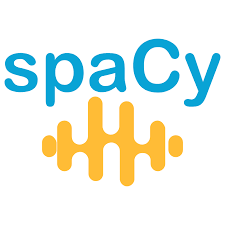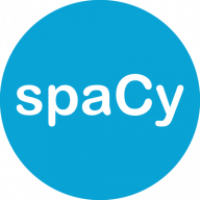SpaCy

The SpaCy: A Powerful NLP Library for Modern Applications:
Introduction:
SpaCy: In the field of Natural Language Processing (NLP), choosing the right tool or framework is critical for building efficient, scalable applications. One such tool that has gained widespread popularity is spaCy, an open-source library designed specifically for production use in NLP.
This article explores the key features of spaCy, its architecture, use cases, and how it compares to other NLP libraries like NLTK and Hugging Face’s Transformers. By the end, you’ll have a clear understanding of why spaCy is a go-to solution for developers and data scientists working on real-world NLP projects.
What is spaCy?
It was first released in 2015 and has since become one of the most powerful and efficient tools for working with text data.
At its core, spaCy provides a wide range of NLP functionalities, including tokenization, part-of-speech tagging, named entity recognition, dependency parsing, text classification, and more.
Key Features of spaCy:
- Fast and Efficient:
One of the standout features of spaCy is its speed. This is especially beneficial for applications requiring real-time processing, such as chatbots or information retrieval systems. - Pretrained Language Models:
spaCy comes with high-quality pretrained language models for various languages. - Easy-to-Use API:
spaCy’s API is designed to be intuitive and developer-friendly. Whether you’re a beginner or an expert, spaCy provides clear documentation and an easy-to-understand syntax that allows you to quickly build and deploy NLP solutions.python:
import spacy# Load the spaCy English model
nlp = spacy.load('en_core_web_sm')# Process a sentence
doc = nlp("SpaCy is an amazing NLP library!")# Print tokens and their parts of speech
for token in doc:
print(f"{token.text} -> {token.pos_}")
- Named Entity Recognition (NER)
One of the most powerful features of spaCy is its ability to recognize named entities in text. It can identify entities like people, organizations, locations, dates, and more. - Dependency Parsing:
spaCy includes state-of-the-art dependency parsers, which are used to determine the grammatical structure of a sentence and the relationships between words. - Support for Multiple Languages:
spaCy supports a wide range of languages, including English, French, German, Spanish, Chinese, and more. - Integration with Deep Learning:
This makes it possible to integrate spaCy’s NLP pipeline with custom neural network models, enabling the creation of sophisticated, end-to-end machine learning applications. - Customization and Extensibility:
spaCy offers flexibility for users who want to extend its functionality. You can create custom pipelines, add new annotations, or train new models. SpaCy’s built-in support for training new machine learning models, combined with its ability to easily swap out components of the NLP pipeline, makes it highly customizable for specific use cases.
The SpaCy NLP Pipeline:

A key component of spaCy is its pipeline architecture. These stages typically include:
- Tokenization:
Tokenization is the process of splitting a sentence into individual words or tokens. spaCy’s tokenization is fast and accurate, handling edge cases such as punctuation and contractions. - Part-of-Speech Tagging:
After tokenization, each token is tagged with its part of speech (noun, verb, adjective, etc.). This helps in understanding the role of each word in a sentence. - Dependency Parsing:
SpaCy uses dependency parsing to determine the grammatical relationships between words in a sentence, which can be useful for understanding sentence structure. - Named Entity Recognition (NER)
This step identifies named entities (e.g., “Google” as a company or “New York” as a location) within the text. - Lemmatization:
Lemmatization reduces words to their base forms (e.g., “running” becomes “run”). This helps in standardizing words, which is essential for many downstream NLP tasks like search or text analysis. - Text Classification (Optional)
spaCy supports text classification, which can be used to categorize text into predefined categories (e.g., positive/negative sentiment, topic labels, etc.).
Use Cases of SpaCy:
- Chatbots and Virtual Assistants:
Its ability to process text quickly and accurately makes it ideal for conversational agents that require real-time responses. By combining spaCy’s NER with custom intent classification, developers can build sophisticated conversational systems for customer service, booking systems, and more. - Information Extraction:
spaCy’s NER and dependency parsing capabilities make it perfect for information extraction tasks, where specific details (like dates, names, or organizations) need to be pulled from large text corpora. - Sentiment Analysis:
With spaCy, you can build custom sentiment analysis models that classify text as positive, negative, or neutral. Although spaCy doesn’t come with a built-in sentiment analysis component, its text classification capabilities allow you to train a model on your own data. - Document Classification:
SpaCy is widely used for document classification, where text documents need to be categorized based on their content. This is useful in industries like publishing, where categorizing articles, research papers, or legal documents is essential for better organization and retrieval. - Text Summarization and Translation:
While spaCy does not natively offer text summarization or translation models, it can be integrated with neural networks for building custom summarizers or translators.
spaCy vs. Other NLP Libraries:
- spaCy vs. NLTK (Natural Language Toolkit)
While NLTK is one of the oldest and most widely used NLP libraries, spaCy stands out for its speed and ease of use in production environments. - spaCy vs. Hugging Face’s Transformers:
Hugging Face’s Transformers library has gained a lot of attention for its ability to handle state-of-the-art transformer models like BERT, GPT, and RoBERTa. While transformers excel at tasks requiring deep contextual understanding, spaCy offers faster and lighter models for production use.
Conclusion:
spaCy has emerged as a leading NLP library for production applications due to its speed, flexibility, and ease of use. Its robust pipeline architecture, pretrained models, and ability to handle various languages make it ideal for a wide range of tasks, from chatbot development and information extraction to document classification and text analysis.
